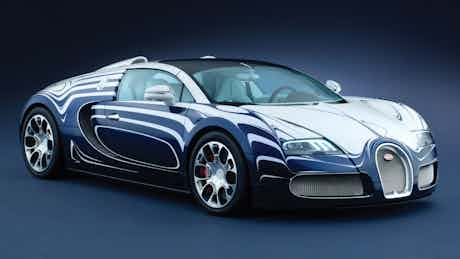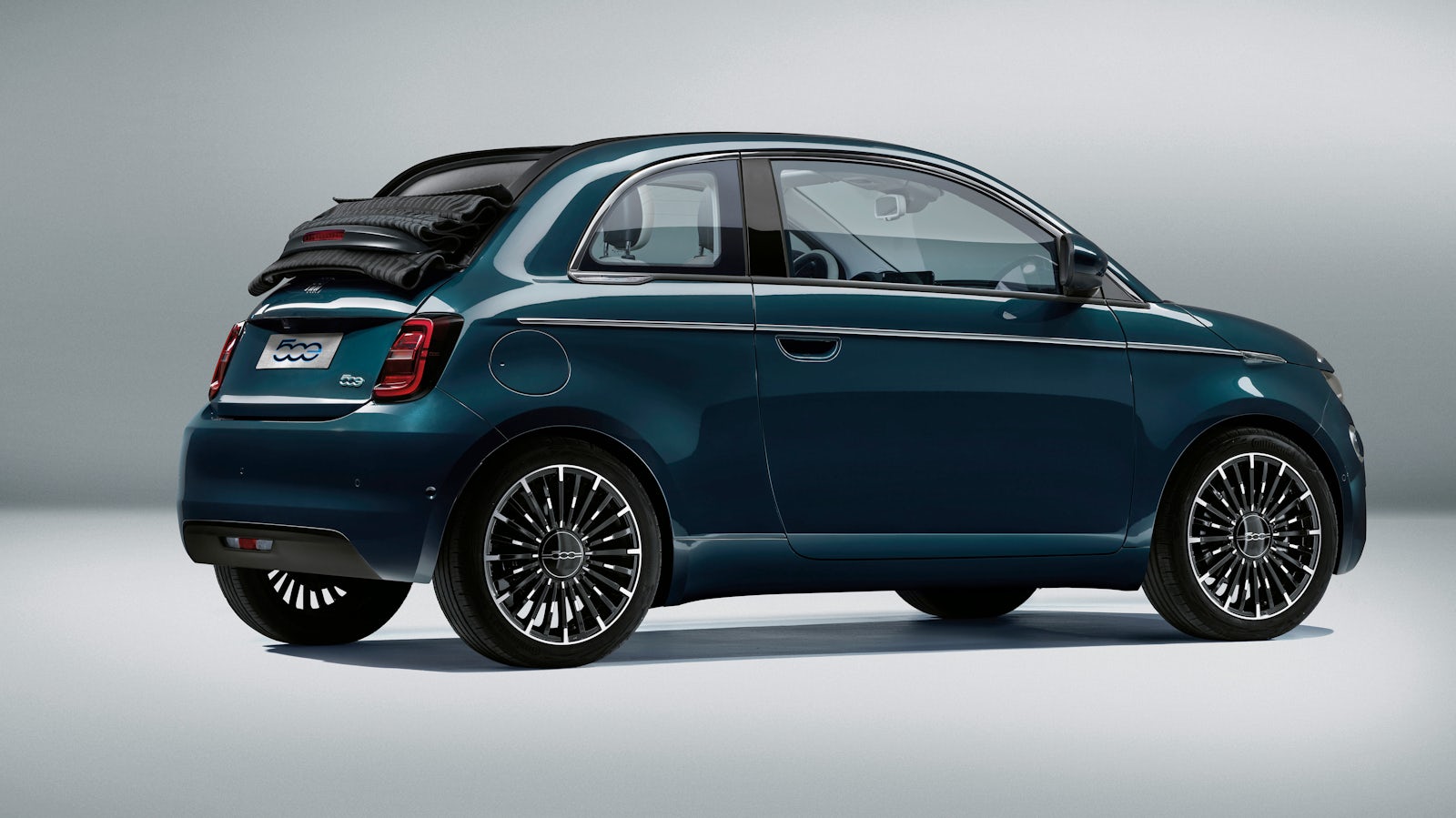Types of car paint explained
August 22, 2022 by carwow staff

Do you know your matte from your pearlescent? We come over all emulsional as we talk about the various types of car paint you can get
There are numerous choices to make when buying a car, from whether it runs on petrol, diesel or electricity, to what trim level, optional extras and alloy wheels it has.
But regardless of whether your car is a small urban runabout, a family electric car, a seven-seater SUV, or something altogether more exotic, choosing what colour its paint is will be one of the more important selections you will make.
Different car paints have a huge impact on how a car looks, but it’s not just the colour you need to decide upon. There are several varieties of paint on offer these days, from solid (IE non-metallic), to matte and pearlescent finishes, as well as special-order options.
Here, we take you through the various types of paint you may come across on your car-buying journey, and also cover whether different paints have an effect on resale values.

Configure a Skoda Fabia in Corrida red solid paint
What’s solid car paint?
The vast majority of cars come with a ‘solid’ paint finish as standard, with metallic and pearlescent finishes costing extra (see below).
Solid paint is cheaper to produce and apply to a car when it is being built, and most manufacturers offer a limited selection of no-cost solid paint choices on a new model; options vary, but you may find a car has three solid paint options as standard (although some cars have only one free paint option), with red, white, blue and grey being common colours.
If you one of the standard paint options, there’s no reason at all not to go for it – but solid paint doesn’t draw the eye in the same way that a metallic finish does, and buyers on the used market may often favour a car with metallic paint.
Solid finishes are free because they’re simple to produce. There are usually only three layers: primer, paint and lacquer, with no metallic flakes added, for example. Many manufacturers now use a paint known as ‘two-pack’, which is simply the paint and lacquer mixed together.
It’s easy to repair damage to cars with a solid finish compared to those with metallic or pearlescent paint. Solid colours with small areas of damage can often be repaired with a touch-up pen in the appropriate shade, and car spares shop (Halfords, etc) can supply the right pen for not much money. More significant repairs are comparatively easy, too, as the paint dries out quickly with the aid of a simple heat lamp.
They may not be the most interesting, but solid paint finishes are certainly the cheapest and easiest to look after.
What’s metallic car paint?
A metallic paint has tiny pieces of aluminium powder mixed into the paint. The metal particles reflect light, hence the shine. Metallics look their best under direct, natural light, but even on a dull day they still shine.
Metallic finishes are often a cost option on new cars, adding anything from £500 upwards to the price of the vehicle, though metallic paint tends to cost more on larger and more expensive cars. Black Sapphire Metallic paint is £695 on a BMW 3 Series, for example, but £795 on a BMW X5 (prices correct as of August 2022). The same paint is a no-cost option on the BMW M3, though, while the latest Range Rover is offered with seven metallic paints as no-cost options (though there are also a number of ‘Premium’ metallic finishes for £865), so prices really do depend on what car you’re buying.
But while metallic paint may add cost the list price of a car, because around 90% of new cars are bought using finance, and PCP deals are a) by far and away the most popular finance package and b) based on a car’s depreciation, you may find that optioning a metallic finish doesn’t add much to your monthly repayments, as a metallic car may be more desirable on the used market, thus its depreciation may be a little less steep than a car with a no-cost solid paint.
Dirt shows more obviously on metallic finishes than solids, so you may end up cleaning your car more often. Be careful, though, as the paint marks more easily. Use a proper car shampoo – washing up liquid contains abrasive salts – and make sure there’s no grit on the sponge. Over-zealous polishing causes swirl marks and car wash brushes can leave marks, too. But any marks can usually be carefully buffed out.
Metallic paint is more difficult to repair, as achieving an exact match is tricky. Even manufacturer-approved body shops don’t make any guarantees.
What’s pearlescent car paint

Pearlescent paints shine even more brightly and deeply than metallics, but they tend to be more expensive, and also need more car taken of them.
Mainstream manufacturers tend to offer a limited range of pearlescent colours, but high-end brands often offer dozens.
The pearlescent lustre is created by ceramic crystals in the paint that both reflect and refract light. That gives the colour a depth that even metallics simply can’t match. And under bright light, lighter shades become iridescent, appearing to be different colours from different angles, sometimes to spectacular effect.
On the flip side, pearlescent paints are even more susceptible to marks, they’re even more difficult to repair than metallics, and special care needs to be taken when washing a pearlescent car, as they’re relatively susceptible to damage from tiny bits of grit that may be on your car-washing sponge.
What’s matte car paint?

Non-shiny matte finishes aren’t a common choice because they tend to only come in shades of silver, grey or black. And because they cost even more than pearlescent paints, and require even greater care than pearlescent finishes.
There are various methods for achieving a matte finish: using a primer with a high epoxy content, a high PVC content in the paint itself, or a flattening agent in the lacquer. Whichever method is used, the paint absorbs more light than it reflects, producing a dull sheen with a certain texture to the colour that has an appeal.
Matte finishes are very high maintenance: they need to be cleaned regularly with specialised shampoos and polishes. Bird droppings need to be cleaned off as soon as possible, as they contain acids that eat through the finish quite quickly. When BMW sold a special edition M3 with matte paint a few years ago, there was a warranty waiver that required the owner to take scrupulous care of it.
Predictably, matte finishes are very difficult and expensive to repair properly.
You either love matte finishes or you don’t. If you do, you may well feel the extra expense and hassle is worth it. But don’t be surprised if your car turns out to be difficult to sell on.
What’s special-finish car paint?

If none of the above floats your boat, various car manufacturers use a range of other techniques to give even more lustrous finishes in a seemingly infinite spectrum of colours. You pay for it, though, with special finishes often adding thousands of pounds to the cost of a car.
Layering lighter shades on top of darker colours – red on top of black, for instance – can create an eye-catching tinted effect. Or layering different pearlescent paints can create a multi-faceted effect that bursts into all sorts of different colours at once when the sun hits it. Even just using a tinted lacquer can have a dramatic effect.
Going even further, most high-end car manufacturers can create any colour you like. If you want your car to match your goldfish, or you want an entirely new colour, they will gladly oblige. Having relieved you of several tens of thousands of pounds for the privilege.
There are yet more possibilities if you’re buying a car made from carbon fibre. Pagani, for instance, can add a coloured tint to the carbonfibre during the material’s manufacturing process – for the price of a whole, brand-new Ferrari. Bugatti charges a similar amount to have no paint at all, just highly lacquered, bare carbon fibre.
At the top end of the market, the only limits are imagination and money. There are cars out there with real silver, gold and even diamonds mixed into the paint.
Will my car’s paint affect its resale value?
Yes, up to a point. Specify a neon-pink car on special order and you may limit the buyer base come resale time. It’s also fair to say that metallic cars tend to be more in-demand than ones with solid paint finishes. It can be the case, though, that the paint options on a new car are all fairly ‘safe’ choices, partly as depreciation is such a large factor in a car’s monthly repayments that car makers may not see the point in offering finishes that a) will seldom be chosen and b) may negatively impact a car’s resale value, thus pushing up finance costs.
Types of car paint FAQs
How much does it cost to paint a car
The cost to paint a car in the factory varies from paint to paint, while getting a respray done can cost thousands of pounds, as components need to be removed or thoroughly masked off, and a car will often need repairs or corrective work before it is resprayed. Individual body panels can often be resprayed for hundreds rather than thousands, though.
How do I find my car’s paint code?
Each car has a unique code that specifies exactly what colour and type of paint it is finished in; this paint code is essential information if you’re having the paint touched up, repaired or resprayed. The paint code will typically be on a sticker somewhere on the car, often in the spare wheel well under the boot carpet, inside the driver’s door jamb or under the bonnet. Have a search online to find out where your car’s sticker is if you can’t find it, as you’re unlikely to be the first person to want to know this information.
How do I restore my car’s paint?
It depends on how much restoration it needs. If you have a couple of stone chips in an inconspicuous place, you could consider applying a touch-up paint pen yourself. If you’re wanting to give the paint a more general spruce up, the best thing to do is to give it a good wash, then apply a clay bar to it (read up on how to use these), before applying a good-quality wax. If your car needs more serious work to its paint, we can only recommend you call in a reputable professional bodywork restorer.
Cars Change? Carwow!
Looking for a new set of wheels? With Carwow you can sell your car quickly and for a fair price – as well as find great offers on your next one. Whether you’re looking to buy a car brand new, are after something used or you want to explore car leasing options, Carwow is your one stop shop for new car deals.

















